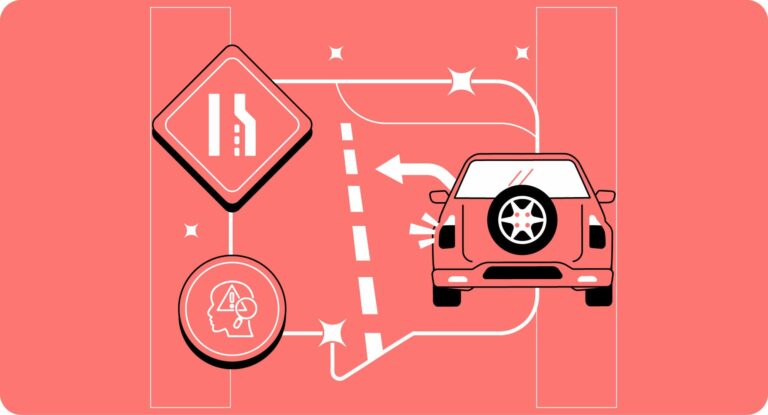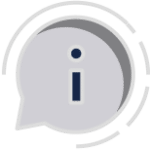When merging with freeway traffic, you should try to merge at or near the speed of the traffic flow to ensure a safe transition into the freeway, minimizing disruptions and risk of accidents.
This answer, however, is just the tip of the iceberg. Merging onto a busy freeway isn’t simply about matching speed; it’s a skill that involves legal awareness, spatial judgment, and split-second decision-making.
Let’s explore this crucial driving maneuver, focusing on California’s specific laws and the implications for personal injury claims. This principle is fundamental for a safe and efficient freeway merge, ensuring smooth integration into the traffic flow, minimizing disruptions, and reducing the risk of accidents.
How To Merge Onto a Highway Safely Under California Rules and Laws
California Vehicle Code (CVC) §22107 states that a driver merging onto a freeway must yield the right-of-way to traffic already on the highway. This means adjusting your speed to match traffic flow and finding a safe entrance gap. Failure to do so can result in dangerous collisions and legal repercussions.
According to the California Office of Traffic Safety (OTS), improper merging is a leading cause of freeway accidents. In 2022 alone, over 10,000 reported accidents involving merging vehicles on California freeways. These accidents often result in injuries, property damage, and, in some cases, fatalities.
CVC §21709 prohibits unsafe lane changes, emphasizing the importance of yielding to vehicles already on the freeway. Cutting someone off is not only rude but also illegal. Further, CVC §22350 mandates that you drive at a “reasonable and prudent” speed for the prevailing conditions.
CVC§ 22106 states, “No person shall start a vehicle stopped, standing, or parked on a highway, nor shall any person back a vehicle on a highway, until such movement can be made with reasonable safety.” This law applies directly to merging, as you’re essentially starting your vehicle from a stopped position on the acceleration lane.
Why Merging at the Right Speed Matters
Merging too slowly forces other drivers to brake abruptly or swerve, creating a chain reaction that can lead to accidents. Conversely, entering the freeway at an excessively high speed can be equally dangerous, as you may need more time to find a suitable gap or adjust to the traffic flow.
A successful merge requires more than checking your mirrors and hitting the gas. It involves you:
- Assessing the speed and spacing of vehicles on the freeway.
- Choose the right moment to enter the acceleration lane and begin your merge.
- Signaling your intentions early and clearly.
- Gradually increase your speed to match the flow of traffic.
- Smoothly blending into the freeway lane without causing sudden braking or swerving for other drivers.
Note
According to the National Highway Traffic Safety Administration (NHTSA), improper merging contributes to yearly accidents. Data from a recent year shows that lane departure and merging accounted for 8.7% of all fatal crashes, a sobering reminder of the potential consequences of failing to merge correctly.
Your Responsibility As the Merging Driver
Beyond safety, understanding the legal aspects of merging is crucial. In a personal injury lawsuit from a merging accident, the fault often lies with the driver who failed to merge correctly. You could be liable for below injuries and damages if you don’t follow proper merging procedures:
A Step-by-Step Guide for Smooth and Safe Freeway Merge
Here’s a detailed guide to help you navigate the process with confidence:
Preparing for the On-Ramp
Preparation is key before you even reach the on-ramp. Start by checking your mirrors and blind spots to ensure a clear view of the traffic around you. Signal your intention to merge well in advance, giving other drivers ample notice of your planned maneuver.
Most importantly, the speed and flow of traffic on the freeway should be assessed. This is crucial for determining the appropriate speed at which you should enter the acceleration lane. Aim to match the speed of the traffic flow and stay within it.
Navigating the Acceleration Lane
The acceleration lane is your runway to build up speed and prepare for merging. Accelerate smoothly and gradually, aiming to match the speed of the freeway traffic by the time you reach the end of the lane.
Avoid abrupt acceleration or braking, which can disrupt traffic flow and create hazardous situations. While accelerating, scan the freeway for a suitable gap in traffic. Look for a space that comfortably fits your vehicle without forcing other drivers to adjust their speed or position.
Maintain a safe following distance from the vehicle ahead of you in the acceleration lane, allowing for adjustments if necessary.
Joining the Freeway Flow
Once you’ve reached the end of the acceleration lane and identified a suitable gap, it’s time to merge. Do so smoothly and assertively, maintaining your speed and avoiding sudden movements.
Check your blind spot one final time before entering the freeway lane. Once you’ve successfully merged, adjust your speed to match the traffic flow and promptly turn off your turn signal.
The Importance of Road Signs, Markers, and Your Attention
Successfully merging onto a freeway or highway requires more than knowing how to maneuver your vehicle. It also involves paying close attention to the road signs, markers, and traffic flow around you.
When approaching a merge, keep a keen eye out for specific signs and markings, including:
Merge Signs and Markers:
- Merge Signs: These diamond-shaped signs indicate that a lane is ending, and you must merge into the adjacent lane. They’re typically accompanied by arrows pointing in the direction of the merge.
- Lane Closure Signs: These signs clearly state if a lane is closing ahead, giving you ample time to prepare for a merge.
- Dotted Lane Lines: A white line separating lanes indicates that merging is permitted.
- Solid Lane Lines: A solid white line means staying in your lane and not attempting to merge.
Anticipation and Quick Decision-Making
- Match Speed: As you approach the merge, adjust your speed to match the traffic in the lane you’re merging into. This makes the transition safer and more accessible for everyone involved.
- Find a Gap: Look for a safe opening in the traffic stream and signal your intention to merge well in advance.
- Be Patient: Avoid aggressive driving or forcing your way into traffic. Patience goes a long way in preventing accidents and road rage incidents.
- Special Conditions: Be mindful of weather conditions, road construction, or other factors affecting the merge.
Merging in Complex Situations
Merging onto a busy highway can be intimidating, especially when multiple lanes are involved. In these situations:
- Follow the signs and pay close attention to overhead signs and lane markings, guiding you to the correct lane for merging.
- Plan, and don’t wait until the last minute to merge. Identify your target lane early and smoothly transition into it.
- Maintain awareness by continuously checking your mirrors and blind spots to ensure a safe merge.
Tip
Merging is a collaborative effort. By following the signs, being attentive, and using proper technique, you can contribute to a safe and efficient merging process for yourself and other drivers on the road.
Merging in Tricky Situations in California
Merging onto the freeway can be a challenging ride. Sometimes, you’ll encounter challenging scenarios that require extra skill and awareness. Let’s explore some common merging challenges and how to navigate them safely:
Short on-ramps
Short on-ramps can be a real test of your merging abilities. With limited space to accelerate, it’s crucial to act decisively. Here’s what you can do:
- Be Prepared: Anticipate the short on-ramp and begin accelerating earlier than usual.
- Maximize Acceleration: Use the entire length of the acceleration lane to reach a speed that matches the traffic flow as closely as possible.
- Communicate Your Intentions: Use your turn signal early and maintain eye contact with drivers in the lane you’re merging into.
- Choose Your Gap Wisely: If there’s no clear gap, prioritize merging behind a vehicle rather than forcing your way in front and causing a sudden stop.
Heavy Traffic and the Zipper Merge Method
When traffic is bumper-to-bumper, the zipper merge is your secret weapon. This technique involves using both lanes on the on-ramp and taking turns merging at the merge point, like the teeth of a zipper.
The zipper merge is proven to be more efficient than early merging, as it utilizes the total capacity of both lanes. Avoiding early merging and potential bottlenecks helps reduce overall traffic congestion.
Pro tip
Zipper Merges, where two lanes merge into one, are designed to optimize traffic flow by having vehicles take turns entering the open lane. When approaching a lane closure, use both lanes fully until reaching the designated merge point, then seamlessly alternate with other drivers like a zipper.
This method maximizes road space, reduces congestion, and maintains smoother traffic compared to early merging. Those waiting to merge until the last moment follow the correct procedure, so be courteous. For a visual demonstration, watch this brief CDOT video on merging.
Proceed With Extra Caution in Adverse Weather Conditions
Rain, fog, snow, or other adverse weather conditions make merging even more challenging. Reduced visibility, slippery roads, and unpredictable driver behavior increase the risk of accidents. Do this:
- Reduce your speed significantly to account for the decreased traction and visibility.
- Leave more space between your vehicle and the one ahead to allow longer braking distances.
- Turn on your headlights to enhance your visibility to other drivers.
- Don’t rush the merge. Wait for a more significant gap in traffic and merge smoothly.
Watch Out for Blindspots When Merging With Large Trucks
Large trucks have significant blind spots, making it difficult for them to see smaller vehicles. When merging near a truck, take extra precautions. Don’t linger. Avoid staying in a truck’s blind spot for extended periods. Either accelerate to pass or fall back to a safe distance.
Use your turn signal well in advance to give the truck driver plenty of notice. Position your vehicle so it’s visible in the mirrors so that the truck driver can see you. Trucks need more space to maneuver, especially when turning, so give them ample room to avoid accidents.
How a Freeway Merge Car Accident Affects Your Personal Injury Claim
In the unfortunate event of a car accident during a merge, demonstrating that you adhered to CVC §22107 and merged safely can significantly impact your personal injury claim. While California operates under a comparative negligence system, meaning fault can be shared between parties, proving you acted responsibly can reduce your liability and maximize your chances of receiving fair compensation.
If the at-fault driver violated CVC §22107 by failing to yield the right-of-way while merging, this strengthens your claim. It paints their negligence and establishes a strong foundation for your case.
In a Personal Injury Claim, Evidence Everything
This includes the police report, witness statements, photos or videos of the accident scene, medical records, and any documentation proving you followed proper merging procedures. This evidence can be used to support your claim and establish the other driver’s fault.
The severity of your injuries and the extent of your damages play a role in the compensation you may receive. If you prove you followed safe merging practices and the other driver was at fault, you may be entitled to compensation for medical expenses, lost wages, pain and suffering, and other damages.
Never Admit Fault, Even if You Are Primarily Responsible for the Accident
Even if you believe you were primarily responsible for the accident, you may still be able to recover damages in California. Due to the state’s pure comparative negligence standard, you can sue other at-fault parties, though your final compensation will be reduced by your percentage of fault as determined by the jury.
For instance, if you’re deemed 20% at fault in an accident resulting in $20,000 in damages, you could still receive $18,000. Besides, you might need clarification about your level of responsibility. Therefore, investigation is needed before making conclusions about the fault.

Seek the Compensation You Deserve After a Freeway Merge Car Accident
If another driver’s negligence caused your injuries, our experienced car accident attorney is here to fight for your rights. We understand the intricacies of merging laws and can help establish the other driver’s fault in causing your injuries.
We gather all evidence, like traffic camera footage, dashcam recordings, witness statements, and forensic evidence, to build a compelling case and secure the compensation you deserve. Contact us today for a free consultation and receive expert legal guidance on your next steps.










